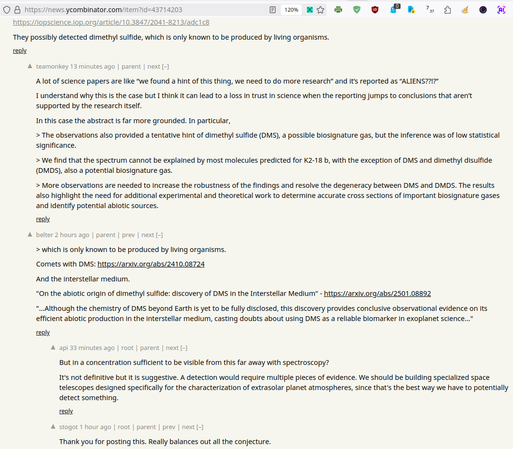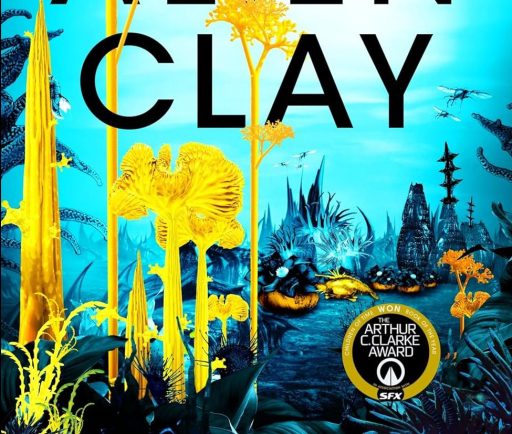Alien Clay
What would aliens look like? Not just another intelligent species, but alien animals, or entire ecosystems? It’s very hard for us to imagine them without falling back on variations of Earth animals. So aliens in sci-fi often look like insects, octopuses, or other species we’re familiar with.
To be sure, aliens would have evolved in the same universe we’re in, with the same laws of physics. So it seems reasonable to expect some convergence, much as we see with evolution on Earth. A fish shape, for instance, turns out to be ideal for moving quickly in a liquid environment. Which is why mammals that move back into the sea, such as whales and dolphins, eventually evolve back into that fish-like shape. And camera-like eyes reportedly evolved independently at least thirty times.
On the other hand, the diversity of solutions evolution comes up with on our planet is striking. And we should expect differences in the environment on other planets to cause subtle, and not so subtle changes in evolutionary pressures. And that a large part of the environment is provided by life itself (oxygen, soil, trees, etc.). So even on a planet relatively similar to Earth, we might see radically different biospheres.
These alternate ecosystems are very hard to imagine. Sci-fi sometimes gets there, but it seems relatively rare. Alien Clay is Adrian Tchaikovsky’s shot at an attempt. He describes a world where life works very differently.
Arton Daghdev is a biologist who bristles under the ideologies of the Mandate, the authoritarian regime that runs human society. This leads him to join the revolution against that regime, which eventually results in his arrest and exile to one of the labor camps the regime maintains on exoplanets. Since there is no FTL in this universe, with interstellar travel taking decades in some kind of suspended animation, the sentence essentially removes political prisoners from Mandate society.
When Daghdev arrives on Kiln, the world he’s been sentenced to, he discovers a vibrant and seemingly aggressive alien ecosystem, with the human labor camp in an isolated dome, and a constant risk of alien infection of some type, which apparently alters people and drives them mad.
It turns out that the Mandate is keeping a secret here. Ancient ruins have been found, with writing that a team of archaeologists are attempting to decipher. But there are no signs of an intelligent civilization level species, at least none that the team of biologists studying the life on Kiln have been able to find.
As a distinguished biologist, Daghdev is interviewed by the camp commandant, who is very interested in solving the puzzle of the ruin builders. He is assigned to Dig Support, the team that assists the scientists. The scientists have to walk a tightrope. They must show progress in frequent presentations to the commandant, but must carefully present their results in a way that doesn’t violate Mandate ideology, which expects them to find something human-like behind the ruins. However, it quickly becomes evident to Daghdev that Kiln operates by its own rules, which don’t fit human preconceptions.
At the same time, Daghdev ends up joining the local revolution in the camp, with a goal of overthrowing the commandant and his security team, and gaining access to the ship in orbit around the planet in order to return to human civilization, dystopian as it is. We get a picture of a society back on Earth that has had a revolutionary undercurrent for a long time, with entire generations growing up under the secret committees and sub-committees of the revolution. Most of the characters have eastern European names, evoking imagery of the long history of struggles against authoritarianism in that region.
So it’s not a happy tale, at least not at the beginning. Without getting into spoilers, things become increasingly dire, until we get a perspective shift toward the end, one that redefines the relationship between the humans and the alien biosphere.
I enjoyed this book, primarily due to the ideas about biology that Tchaikovsky explores. But as usual I have to caveat this by noting that his writing often remains a struggle for me, although obviously not an insurmountable one. In this case, he has long stretches with no dialogue, either because Daghdev is ruminating on the biology or political situation, or because Tchaikovsky is telling us about conversations rather than showing them. It made the story feel slow, and many of the characters distant.
But as with his other books, it wasn’t enough to stop me from reading. And of course many will find his writing the best part. So if exploring the idea of a completely different way for intelligence to work in an alien ecology sounds appealing, with some revolutionary dynamics thrown, then I recommend checking this one out.
Have you read it? If so, what did you think? Reading anything else interesting lately?
#Evolution #ExtraterrestrialLife #sciFi #ScienceFiction


